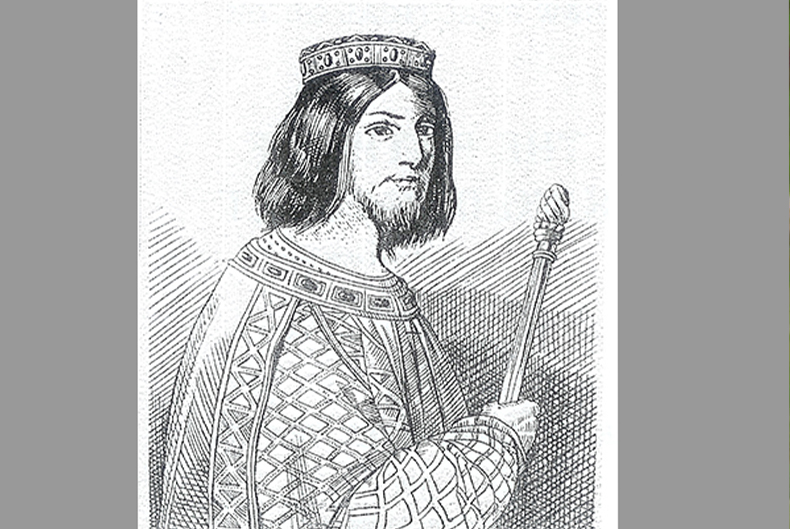Who was Saint Dagobert II?
Son of the Merovingian King Sigebert III (or Sigisbert), and grandson of King Dagobert II, he was born around 652 AD. When his father died in 663, he was exiled by Grimoald, the Mayor of the palace, and was educated in a monastery in Ireland.
However, Grimoald's treacherous ruse was to no avail. When Wilfred, Bishop of York, told the lords of Austrasia of the existence of their king, they called him back to the throne in 675.
After he had taken his country back, Dagobert II brought peace and stability, and founded numerous churches and abbeys.
In 679, a conflict broke out with Neustria. Thierry was their king and his Mayor of the Palace, Ebroin, conceived. a. plot against Dagobert, who was then assassinated on 23rd December 679, in the forest of' Woëvre, some distance from his royal residence of Stenay. He was canonized at the council of Douzy in 872.
What vestiges of Dagobert's reign can still be seen at Stenay?
1. THE SAINT DAGOBERT II REMEMBRANCE ROOM
Its aims are:
- - to commemorate the memory of the last Merovingian king of the mighty realm of Austrasia, DAGOBERT II (652-679). This sovereign, living then at Stenay, died by assassination not far from his residence. In the exhibition, you will find a number of documents dealing with the legend and the history of this king, who was later beatified by the Church.
- - to give the visitor a short introduction to "Merovingian times" in order to put Dagobert II back into his own context, with the help of some artefacts such as pottery, scram saxes, coins, fibulae, antefixes, buckle plates, calf shields, etc. as well as prints illustrating this period of our Merovingian ancestors which is so far back and so little-known.
2. THE GATEWAY OF THE CHURCH OF SAINT-DAGOBERT
In 1965, during the course of works undertaken on his property, Monsieur Laplante, the architect at Stenay, discovered ancient walls, which led him to think that the gateway of the church of Saint Dagobert had been found.
In 1972, a group of Stenay citizens known as the "Group for the research and improvements of historic monuments", led by Monsieur Renault, professor at the Stenay Lycee, embarked on the updating of the gateway. The showpiece is the sculpted tympanum probably representing Saint Dagobert seated in majesty, flanked by two people on their knees.
The gateway was dismantled systematically into separate pieces and rebuild in the caves of the Saint-Dagobert remembrance room.
3. THE MYSTERIOUS STONE: THE SATOP SQUARE
The Sator Square contains 5 words, which can be read in all ways: SATOR, AREPO, TENET, OPERA, ROTAS. The pagans, who used the stone before the Christians, placed the word ROTAS at the top, in place of the word SATOR (as at Pompeii). A replica of the stone can be seen in the caves of the Saint-Dagobert remembrance room.
Adress: Crypte Saint Dagobert, 3 place Poincaré, Stenay.
Opening hours: during office hours (closed 12-2))
BOOKS:
- * LA RACE FABULEUSE, in 1973, which developed the passion, for Merovingian history and that of Dagobert II.
- * THE HOLY BLOOD AND THE HOLY GRAIL, by three English authors, Michael Baigent, Richard Leigh and Henry Lincoln. The book deals with the mysteries, which surrounded the affair of Rennes-le-Chateau (Aude - France) at the end of the last century, an affair, which revolved around the descent of Dagobert II.
Text and thanks:
Cercle Saint-Dagobert II, Stenay

